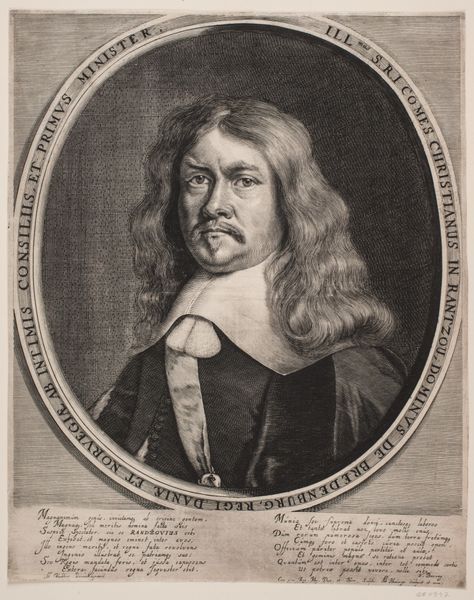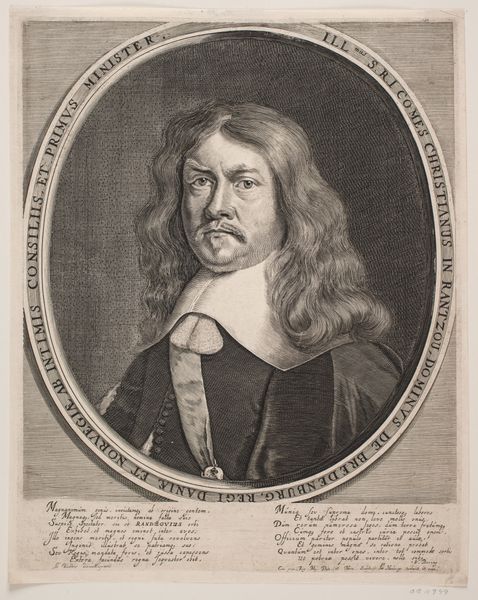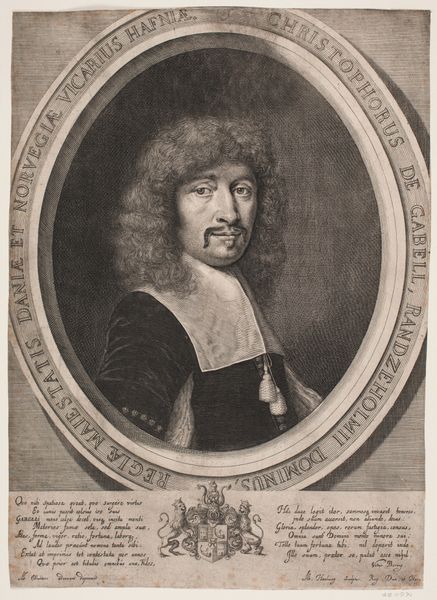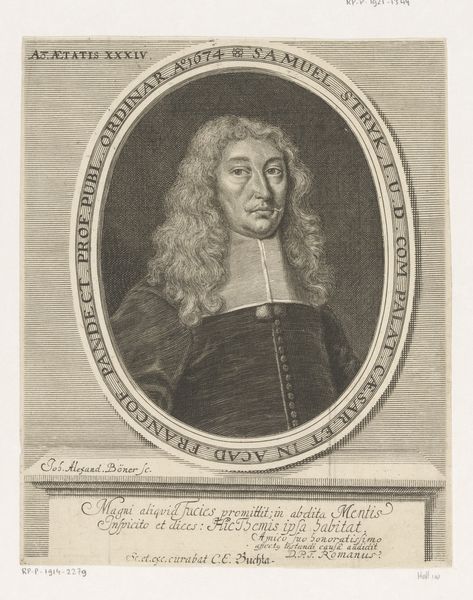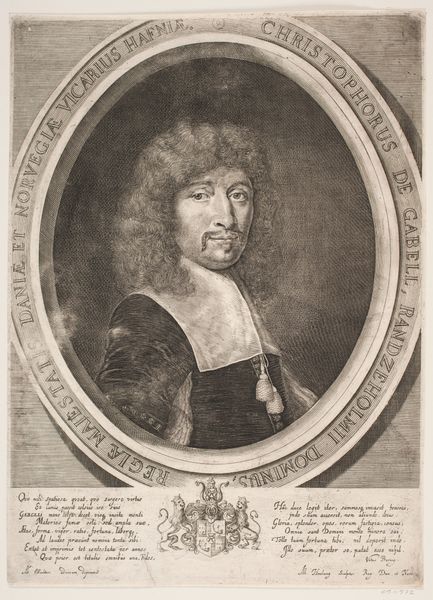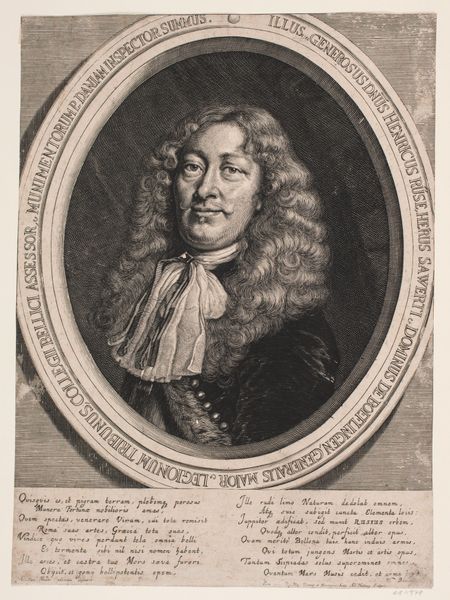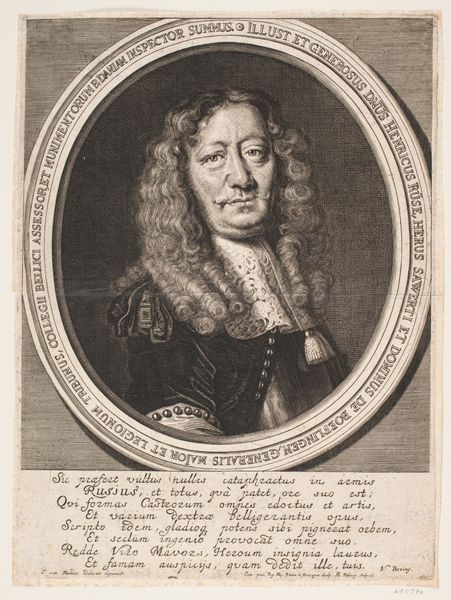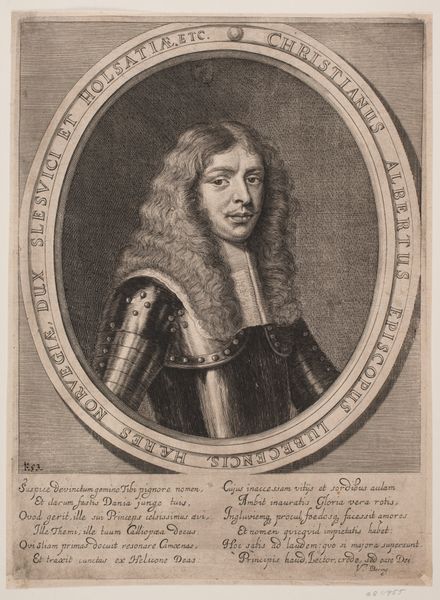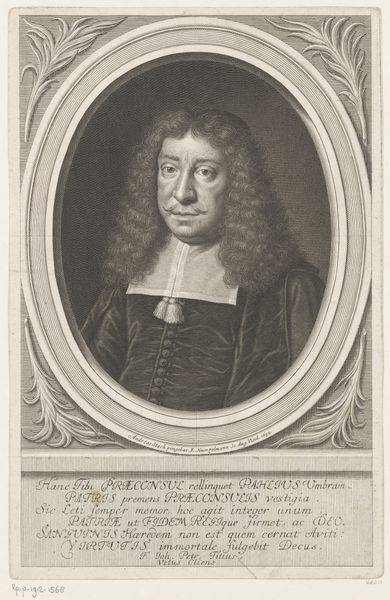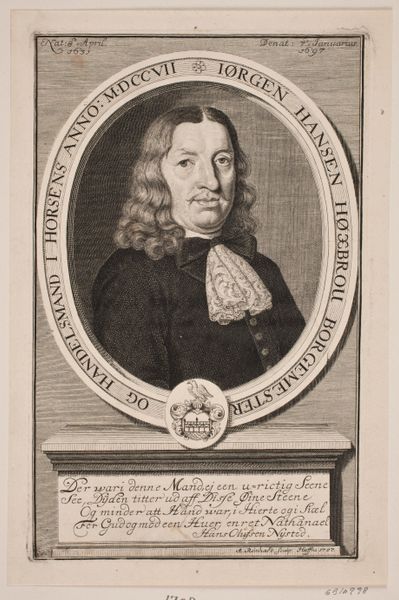
drawing, print, engraving
#
portrait
#
drawing
#
baroque
# print
#
engraving
Dimensions: 555 mm (height) x 281 mm (width) (plademaal)
Editor: We're looking at "Carl Gustav Wrangel," an engraving from 1658 by Albert Haelwegh, currently housed in the SMK in Copenhagen. What immediately strikes me is the formality of the portrait, and I wonder what purpose images like this served at the time. How do you interpret this work? Curator: Considering the period and the subject's military attire, this engraving clearly functions as a form of political communication. It presents Wrangel, a powerful Swedish military commander, as a figure of authority and status. Notice the Latin inscription below. How do you think that inscription functions within this representational context? Editor: I assume it amplifies his importance, listing his titles and affiliations. It almost feels like early PR. Was there an intended audience beyond, say, a wealthy patron? Curator: Precisely. These types of prints circulated beyond court circles. They helped to cultivate a public image, shaping perceptions of power and legitimacy, particularly important during periods of intense political and military activity. Think about how this image might influence the public perception of Swedish power and Wrangel’s role in it. Editor: So, it’s not just about documenting someone’s likeness, but actively constructing and disseminating a particular image of power. Are there specific visual cues reinforcing this? Curator: Absolutely. Consider the oval frame: it gives the image the feeling of a classical bust. How does that visual cue add to Wrangel's cultural authority? Also consider the detail of the armour itself: it indicates military might but also hints at a significant expenditure. The very creation of a print like this had financial implications that impacted its reach. Editor: It makes me think more deeply about how images, even prints, participated in the politics of the time. It’s more than just a portrait. Curator: Exactly, we learn about the construction of power and the deliberate manipulation of imagery for political purposes. The study of visual representation contributes a lot to our understanding of history.
Comments
No comments
Be the first to comment and join the conversation on the ultimate creative platform.
